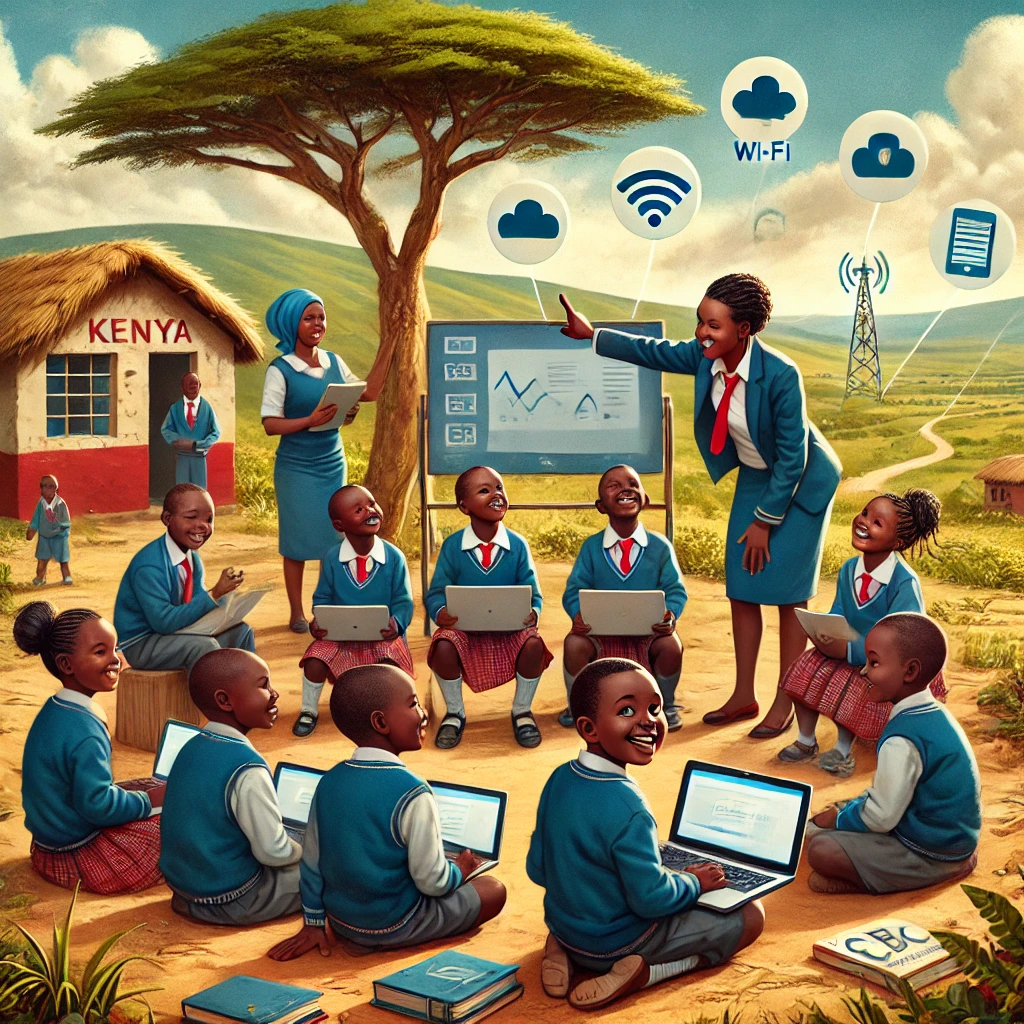Kenya holds a prominent position in the East African Community, often seen as a regional leader alongside neighbors like Rwanda. In recent years, the country has pursued significant efforts to integrate technology into its education system, aiming to equip students with skills for a digital era. Initiatives like the free school laptops program and the transition from the 8-4-4 system to the Competency-Based Curriculum (CBC) highlight this ambition. This article examines the interplay between tech adoption and education in Kenya, exploring the laptops initiative’s outcomes, the evolving education system, and a regional comparison with Rwanda.
Tech Adoption in Kenyan Education: Efforts and Realities
Kenya has taken notable steps to weave technology into its education fabric. The Digital Literacy Program, launched in 2016, sought to provide laptops to primary school pupils, aiming to enhance ICT integration. Alongside this, the Student Laptop Purchase Program (SLPP), in collaboration with Microsoft and Intel, offers discounted laptops to university students, faculty, and staff, broadening access through bulk purchasing power. These efforts reflect a national goal to reduce the digital divide and prepare students for a tech-driven future.
However, implementation has faced hurdles. Rural regions often lack reliable electricity and internet, limiting the reach of these initiatives. The COVID-19 pandemic underscored this gap, with over 50% of students unable to participate in remote learning due to missing devices or connectivity(I happened to be one of them), according to the World Bank. Teacher training also poses a challenge, as educators need ongoing support to adapt to new tools. These realities highlight the complexities of scaling tech adoption across a diverse nation.
A Regional Lens: Kenya and Rwanda
Rwanda provides a compelling counterpoint to Kenya’s approach. The country has pursued a centralized strategy, with the One Laptop Per Child (OLPC) program starting in 2009 and a plan to equip all public schools with smart classrooms—featuring computers, internet, and projectors—by 2020. Rwanda allocates about 20% of its national budget to education, emphasizing ICT skills, and has partnered with companies like Microsoft to advance e-learning.
Kenya’s efforts, by contrast, are more varied, spanning laptop distribution for primary pupils and discounted purchases for higher education. Rwanda’s focused approach may allow quicker infrastructure gains, while Kenya’s broader initiatives target multiple educational levels. Both countries grapple with rural access and teacher training, but their strategies offer distinct paths toward a shared goal of tech-enabled education.
The Free School Laptops Initiative: Vision and Challenges
Announced in 2013 by then-President Uhuru Kenyatta, the free school laptops initiative aimed to supply primary school pupils with devices to boost digital learning. A pilot phase in 2016 saw laptops distributed to 150 schools, backed by an initial budget of Sh17 billion, later trimmed to Sh13.4 billion due to financial constraints. The program was framed as a way to position Kenyan students competitively on a global stage.
Yet, the rollout encountered significant obstacles. Funding shortages, logistical delays, and inadequate infrastructure(i.e electricity in rural areas) slowed progress. Observers noted an urban-rural disparity, with some arguing the program favored city schools. Reports suggest mixed results, with some schools receiving laptops, but widespread implementation remains uncertain. A 2024 scam alert further complicated perceptions, warning of fraudulent claims tied to the initiative. The experience reflects a blend of bold vision and practical challenges, often shaped by political and resource dynamics.
The Shift from 8-4-4 to CBC: A Structural Evolution
Kenya’s education system has seen a major change with the move from the 8-4-4 structure to the CBC, introduced in 2017. The 8-4-4 system, established in 1985, organized education into 8 years of primary, 4 years of secondary, and 4 years of tertiary schooling, focusing on content delivery and exams. The CBC, structured as 2-6-3-3-3 (early years, lower primary, upper primary, lower secondary, and senior school), shifts toward competency-based learning, emphasizing skills and practical application.
This transition has sparked varied perspectives. The 8-4-4 system was praised for its clarity and structure but criticized for its exam-centric nature. The CBC, meanwhile, lists digital literacy among its seven core competencies, encouraging tools like the CBC app for assessments and record-keeping. Supporters see it as a modern approach suited to digital needs, while others question its implementation costs and readiness, particularly in under-resourced areas. The change reflects an evolving educational landscape, with technology playing a central role in the debate.
Balancing Opportunities and Obstacles
Kenya’s pursuit of tech in education reveals a mix of ambition and complexity. The free school laptops initiative, though impactful in intent, underscores the need for robust infrastructure and equitable distribution. The shift to CBC introduces new possibilities for tech integration, yet its success depends on addressing rural gaps and supporting teachers. Rwanda’s progress offers a comparative lens—its centralized model contrasts with Kenya’s multifaceted efforts, each with strengths and trade-offs.
Moving forward, Kenya faces a pivotal moment. Enhancing rural connectivity, investing in teacher development, and ensuring resource equity could amplify the impact of its initiatives. The education system’s evolution, whether viewed through the lens of 8-4-4 or CBC, highlights technology’s growing role. How Kenya navigates these dynamics will shape its ability to prepare students for a digital world and reinforce its standing in East Africa.
Kenya’s journey in merging technology with education is one of aspiration and adaptation. The free school laptops initiative, despite its challenges, signaled a commitment to digital learning, while the shift from 8-4-4 to CBC reflects a broader rethinking of educational priorities. Compared to Rwanda, Kenya’s approach is diverse, aiming to reach students across levels, though execution remains a work in progress. As the country balances innovation with practical realities, its efforts offer a window into the broader quest to align education with the demands of a tech-driven future—neither a clear triumph nor a failure, but a complex, ongoing endeavor.

Posted inTechnology

